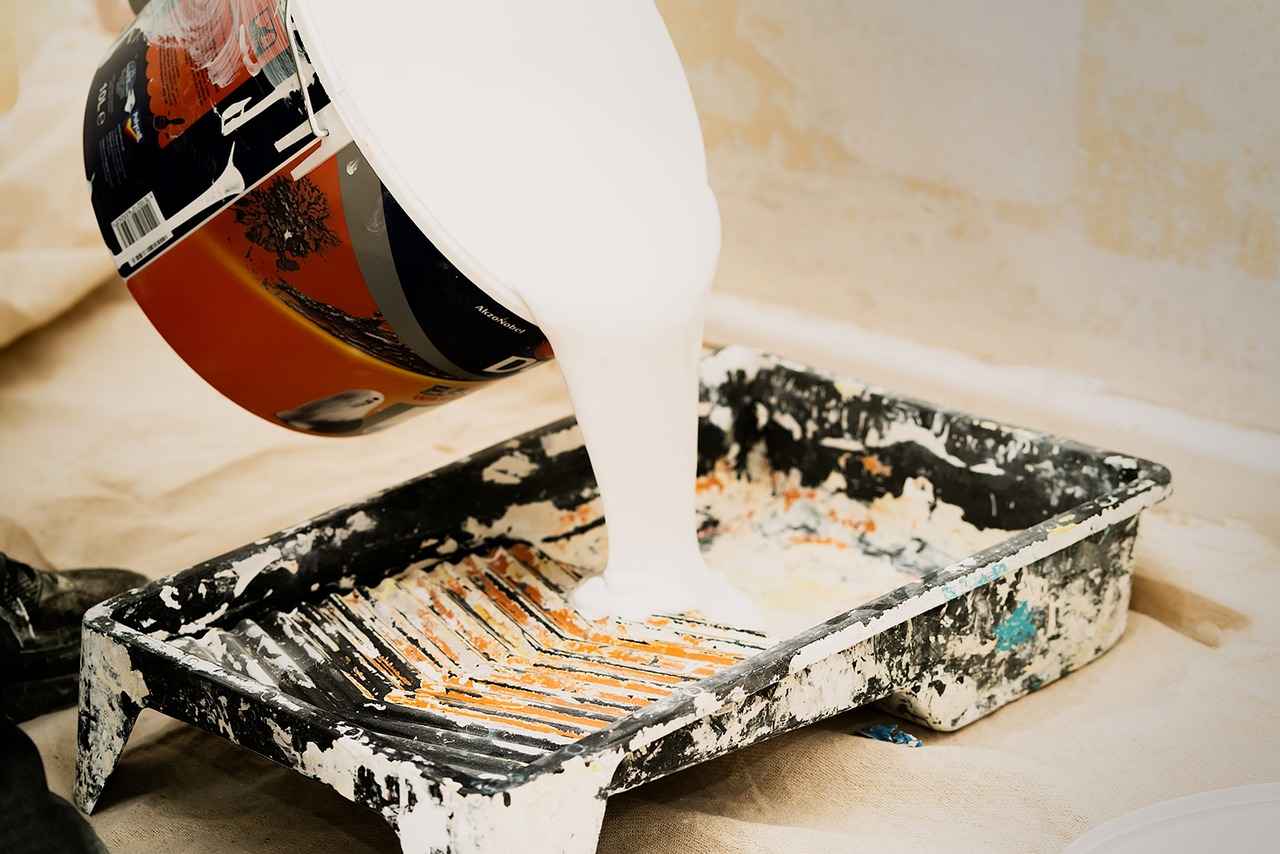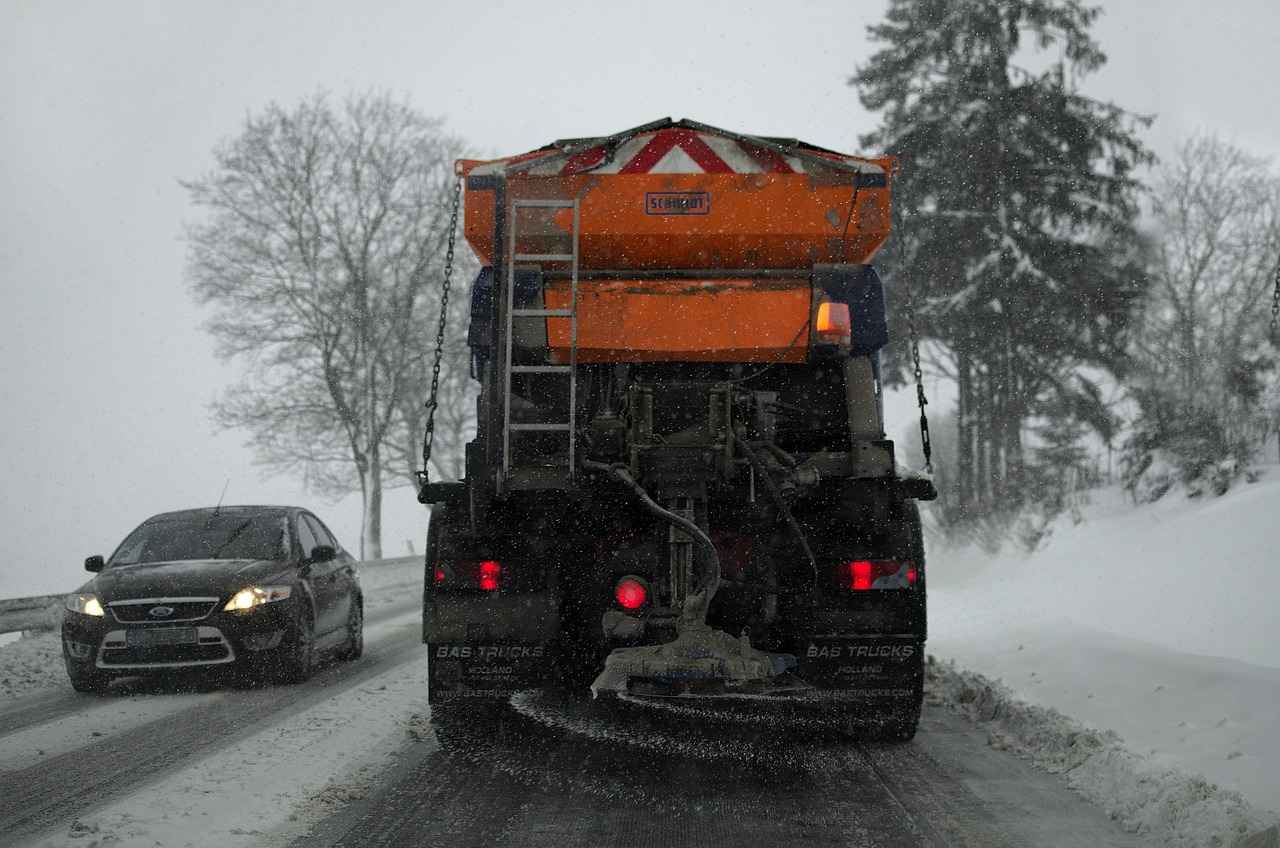This article explores the safest and most effective methods for stripping lead-based paint, ensuring compliance with regulations while protecting your health and the environment.
What is Lead-Based Paint and Why is it Hazardous?
Lead-based paint was commonly used in homes until it was banned in 1978 due to its toxic effects. The primary concern arises from lead dust, which can be inhaled or ingested, posing serious health risks, particularly for children and pregnant women. Exposure can lead to developmental delays, learning difficulties, and various health issues. Recognizing the dangers associated with lead-based paint is essential for homeowners, especially those residing in older properties.
Identifying Lead-Based Paint in Your Home
Before embarking on any removal process, it’s crucial to confirm the presence of lead-based paint. Homeowners can utilize DIY testing kits available at hardware stores or hire certified professionals for a comprehensive assessment. These tests typically involve a simple wipe or swab that changes color in the presence of lead. Identifying lead paint accurately ensures that necessary precautions are taken during removal.
Legal Regulations Surrounding Lead-Based Paint Removal
Compliance with federal and state regulations is paramount when dealing with lead-based paint. The Environmental Protection Agency (EPA) mandates that contractors working on homes built before 1978 follow specific guidelines under the Renovation, Repair, and Painting (RRP) Rule. Homeowners must also be aware of local laws regarding lead paint removal, as these can vary significantly. Understanding these regulations helps to ensure safe practices and avoid potential legal repercussions.
Preparing Your Space for Lead Paint Removal
Proper preparation is vital for a successful lead paint removal project. Start by securing the area to prevent contamination of other spaces. This includes sealing doors and vents with plastic sheeting. Gather essential equipment such as drop cloths, tape, and the chosen stripping tools. Ensuring that the workspace is adequately prepared minimizes risks and enhances safety during the removal process.
Personal Protective Equipment (PPE) for Lead Paint Stripping
Using the right personal protective equipment (PPE) is crucial for safety. Essential PPE includes respirators, gloves, and protective eyewear. A respirator that filters out lead particles is particularly important, as lead dust can be harmful if inhaled. Wearing coveralls can also prevent lead dust from settling on clothing, which could lead to unintentional exposure.
Effective Methods for Stripping Lead-Based Paint
There are several effective techniques for safely stripping lead-based paint. Each method has its advantages and disadvantages:
- Chemical Strippers: These are popular for their effectiveness in breaking down lead paint. However, it’s crucial to select a non-toxic stripper and follow the manufacturer’s instructions closely to ensure safety.
- Heat Guns: Heat guns can effectively remove lead paint without the use of chemicals. They work by softening the paint, making it easier to scrape off. Caution is necessary to avoid burning the paint, which can release toxic fumes.
- Sanding Techniques: While sanding is a common method, it can generate lead dust. Using a HEPA-filtered vacuum during sanding is essential to contain dust and prevent exposure.
Disposing of Lead-Based Paint Waste Safely
Proper disposal of lead paint waste is critical in preventing environmental contamination. Lead waste should be placed in sealed containers and disposed of according to local regulations. Many communities offer special collection programs for hazardous waste, ensuring that it is handled safely.
Cleaning Up After Lead Paint Removal
Post-removal cleanup is essential to ensure no lead dust remains. Use a damp cloth to wipe surfaces and a HEPA vacuum to clean up dust. It’s vital to dispose of cleaning materials safely to avoid further contamination.
Preventing Lead Poisoning in the Future
After lead paint removal, implementing preventive measures is vital. Regularly check for peeling or chipping paint and maintain a clean environment. Educating family members about lead exposure and its risks can help maintain a safe living space.

What is Lead-Based Paint and Why is it Hazardous?
Lead-based paint was commonly used in homes and buildings until its ban in the late 1970s due to its harmful effects on health. This type of paint contains lead, a toxic metal that can have serious health implications, particularly for vulnerable populations such as children and pregnant women. Understanding the composition and dangers of lead-based paint is essential for homeowners, especially those living in older homes.
Lead-based paint is made from a combination of pigments, binders, and solvents, with lead often included to enhance durability and color. When this paint deteriorates, it can produce lead dust or chips that are easily ingested or inhaled, leading to lead poisoning. The Centers for Disease Control and Prevention (CDC) has identified lead exposure as a significant public health concern, particularly for children under the age of six, who are at a higher risk of developing cognitive impairments and behavioral issues.
The health risks associated with lead exposure are profound. Lead poisoning can cause a range of symptoms, from abdominal pain and headaches to more severe complications such as seizures and developmental delays. In pregnant women, lead exposure can result in premature birth, low birth weight, and developmental problems in the fetus. The effects of lead poisoning can be long-lasting, affecting a child’s ability to learn and thrive.
It is crucial for homeowners to be aware of the presence of lead-based paint in their properties, particularly if they live in homes built before 1978. Regular maintenance and inspections can help identify potential hazards. Homeowners should also educate themselves about the signs of lead paint deterioration, such as chipping, peeling, or cracked paint, which can indicate the need for immediate action.
To ensure safety, it is advisable to consult with professionals who can conduct lead testing and provide guidance on safe removal methods. Understanding the risks associated with lead-based paint is the first step in protecting your family and ensuring a healthy living environment.
In summary, lead-based paint poses significant health risks due to its toxic properties, particularly for children and pregnant women. Awareness and proactive measures are essential to mitigate these risks and maintain a safe home.

Identifying Lead-Based Paint in Your Home
Before undertaking any renovation or restoration project, it is crucial to determine whether lead-based paint is present in your home. Lead-based paint was commonly used in homes built before 1978, and it can pose serious health risks, particularly to young children and pregnant women. This section will guide you through effective methods for identifying lead-based paint, ensuring a safer environment for you and your family.
Why Testing for Lead-Based Paint is Important
Lead exposure can lead to severe health issues, including developmental delays in children, cognitive impairments, and various physical health problems. Therefore, identifying lead-based paint is the first step in mitigating these risks. Early detection allows homeowners to take appropriate action, whether it be safe removal or encapsulation.
DIY Testing Kits
One of the most accessible methods for identifying lead-based paint is through DIY testing kits. These kits are available at most hardware stores and typically include:
- Swab tests: These involve rubbing a specially treated swab on the paint surface. If lead is present, the swab will change color.
- Dust test kits: These kits allow you to collect dust samples from surfaces and send them to a lab for analysis.
- Paint chip tests: This method involves removing a small chip of paint and sending it to a lab for testing.
While DIY kits can provide quick results, they may not always be 100% accurate. Therefore, it is essential to follow the instructions carefully and consider professional testing for more reliable results.
Professional Assessments
If you suspect lead-based paint in your home or want a thorough evaluation, hiring a certified professional is recommended. Professionals use advanced testing methods, such as:
- X-ray fluorescence (XRF): This non-destructive method can quickly determine the lead content in paint without damaging the surface.
- Laboratory analysis: Professionals can take samples of paint, dust, or soil and send them to a lab for comprehensive testing.
Professional assessments may be more costly than DIY kits, but they provide a higher level of accuracy and peace of mind, especially for larger projects or homes with children.
Visual Identification
In addition to testing, homeowners can look for visual signs of lead-based paint. Common indicators include:
- Chipping or peeling paint: Areas where paint is deteriorating may indicate the presence of lead.
- Old paint layers: Homes with multiple layers of paint, especially those built before 1978, are more likely to contain lead.
- High-risk areas: Locations such as windowsills, doors, and areas with high wear and tear are more likely to have lead paint.
While visual identification can provide clues, it’s essential to confirm the presence of lead through testing.
Conclusion
Identifying lead-based paint in your home is a crucial step in ensuring safety and compliance with health regulations. Whether you choose DIY testing kits or professional assessments, taking action to identify lead paint can help protect your family from its harmful effects. Always prioritize safety and consider consulting with experts for comprehensive evaluations.

Legal Regulations Surrounding Lead-Based Paint Removal
When it comes to lead-based paint, compliance with legal regulations is not just advisable; it is essential for the safety of both individuals and the environment. Lead exposure can have severe health consequences, particularly for young children and pregnant women. Therefore, understanding the laws and guidelines governing lead paint removal is crucial for homeowners and contractors alike.
In the United States, the Environmental Protection Agency (EPA) enforces regulations regarding lead-based paint. The most significant of these is the Lead Renovation, Repair and Painting (RRP) Rule, which mandates that contractors performing work that disturbs lead-based paint in homes built before 1978 must be certified and follow specific work practices to minimize lead exposure. This rule is designed to protect residents, especially vulnerable populations, from the risks associated with lead dust and chips.
To comply with the RRP Rule, contractors must:
- Obtain certification from the EPA or an authorized state program.
- Follow safe work practices, including containment of work areas and proper cleanup procedures.
- Provide homeowners with the EPA’s Lead Hazard Information pamphlet before starting work.
In addition to federal regulations, many states and local governments have their own laws regarding lead paint removal. These regulations may include:
- Stricter certification requirements for contractors.
- Mandatory lead testing and risk assessments before renovations.
- Specific disposal guidelines for lead paint debris.
Homeowners should also be aware of the Residential Lead-Based Paint Hazard Reduction Act of 1992, which requires sellers and landlords to disclose known lead hazards to potential buyers or tenants. This act ensures that individuals are informed about the risks associated with lead-based paint before making housing decisions.
Furthermore, it is vital to understand the implications of non-compliance. Failing to adhere to lead paint regulations can result in significant penalties, including fines and legal action. More importantly, improper removal practices can expose residents to hazardous lead dust, leading to health issues that may require medical intervention.
In summary, navigating the legal landscape surrounding lead-based paint removal requires diligence and awareness. Homeowners and contractors must familiarize themselves with the relevant federal, state, and local regulations to ensure safe practices. By prioritizing compliance, you not only protect your health and the health of those around you but also contribute to a safer environment.

Preparing Your Space for Lead Paint Removal
Proper preparation is crucial for a successful lead paint removal project. Taking the time to prepare your space not only ensures compliance with safety regulations but also minimizes risks associated with lead exposure. Here are essential steps to follow:
- Secure the Area: Before beginning any lead paint removal project, it is vital to secure the area. This involves closing off any access points to prevent unauthorized entry. Use plastic sheeting to cover doors, windows, and vents to contain dust and debris. Make sure to inform all household members about the project and restrict access to the work area, especially for children and pets.
- Gather Necessary Equipment: Having the right tools and equipment is essential for effective lead paint removal. Here’s a list of items you’ll need:
| Equipment | Purpose |
|---|---|
| Plastic Sheeting | To seal off the work area and prevent lead dust from spreading. |
| Personal Protective Equipment (PPE) | Includes respirators, gloves, and goggles to protect yourself from lead exposure. |
| Drop Cloths | To cover floors and furniture, catching any debris that falls during the removal process. |
| Scrapers and Brushes | For manually removing lead paint from surfaces. |
| Vacuum with HEPA Filter | To clean up lead dust effectively after the removal process. |
Additionally, consider using a wet method while scraping or sanding to reduce dust. This technique involves dampening the surface slightly to minimize airborne particles. Always ensure that tools are in good condition and appropriate for the task to avoid accidents.
- Check for Ventilation: Proper ventilation is essential when removing lead paint. Open windows and doors to allow fresh air to circulate, and consider using fans to enhance airflow. However, be cautious of outdoor conditions that may introduce contaminants into your workspace.
- Plan for Waste Disposal: Lead paint removal generates hazardous waste that must be disposed of properly. Research local regulations regarding lead paint waste disposal before starting the project. Prepare designated containers for collecting debris and ensure they are clearly labeled to avoid any accidents.
- Notify Neighbors: If you live in close proximity to others, it’s considerate to inform your neighbors about the lead paint removal project. This transparency helps maintain good relationships and keeps them aware of potential disturbances or safety concerns.
By following these preparation steps, you can create a safer environment for yourself and your family during the lead paint removal process. Remember, taking the time to prepare thoroughly is key to achieving a successful and compliant lead paint removal project.

Personal Protective Equipment (PPE) for Lead Paint Stripping
When embarking on a lead paint stripping project, using the right personal protective equipment (PPE) is not just advisable; it is essential for ensuring your safety and health. Lead exposure can have serious health implications, particularly for vulnerable populations such as children and pregnant women. Therefore, equipping yourself with appropriate PPE is a crucial step in mitigating these risks.
Here are the key types of PPE you should consider:
- Respirators: A high-quality respirator is vital for protecting your lungs from lead dust and fumes. Look for a respirator that is rated N95 or higher, which filters out at least 95% of airborne particles. Ensure it fits snugly against your face to prevent any leaks.
- Protective Clothing: Wear disposable coveralls that are made from materials that can prevent lead dust from contacting your skin. These should ideally have hoods and elastic cuffs to minimize exposure. After the job, these coveralls should be disposed of properly to avoid contamination.
- Gloves: Use heavy-duty nitrile gloves to protect your hands from lead dust and any harmful chemicals you may be using during the stripping process. Avoid using latex gloves, as they can tear easily and do not provide adequate protection.
- Eye Protection: Safety goggles or glasses are crucial to protect your eyes from dust and debris. Ensure they fit well and provide a good seal around your eyes to prevent any particles from entering.
- Foot Protection: Steel-toed boots or shoes should be worn to protect your feet from heavy materials and to prevent any slips or falls. Consider using disposable shoe covers to avoid tracking lead dust outside the work area.
In addition to the basic PPE, it is also advisable to have:
- Hearing Protection: If you are using power tools during the stripping process, consider using earplugs or earmuffs to protect your hearing.
- First Aid Kit: Always have a first aid kit readily available in case of any accidents or injuries during the project.
Before starting your lead paint removal project, ensure that you are familiar with the proper use and limitations of each type of PPE. Regularly inspect your equipment for any signs of wear and replace it as necessary. Remember, the effectiveness of PPE is significantly diminished if it is not used correctly.
Finally, it’s important to dispose of all PPE responsibly after the project to prevent any risk of lead contamination in your home or environment. Following these guidelines will not only safeguard your health but also contribute to a safer working environment.

Effective Methods for Stripping Lead-Based Paint
Stripping lead-based paint requires careful consideration and the right techniques to ensure safety and effectiveness. Homeowners and professionals alike must prioritize methods that minimize health risks while complying with environmental regulations. This section will explore three primary techniques: Chemical Strippers, Heat Guns, and Sanding. Each method has its advantages and considerations, making it essential to choose the right approach for your specific project.
- Chemical Strippers
Chemical strippers are widely used for their ability to effectively dissolve lead-based paint layers. These products contain active ingredients that break down the paint’s bond with the surface, allowing for easy removal. When using chemical strippers, it is crucial to follow safety precautions, including:
- Wearing gloves and goggles to protect your skin and eyes
- Working in a well-ventilated area to avoid inhaling fumes
- Choosing a biodegradable stripper to minimize environmental impact
To apply, simply brush the stripper onto the painted surface, wait for the recommended time, and then scrape off the softened paint. Always dispose of the waste properly, adhering to local regulations regarding hazardous materials.
- Heat Guns
Heat guns offer a chemical-free alternative for removing lead-based paint. By applying heat to the paint, it becomes pliable and can be easily scraped away. This method is advantageous because it reduces the risk of toxic fumes associated with chemical strippers. However, caution is necessary:
- Maintain a safe distance to prevent scorching the wood or surface underneath
- Use a scraper designed for heat removal to avoid damaging the surface
- Ensure proper ventilation to disperse any fumes that may arise
Heat guns are particularly effective on multiple layers of paint and can be used on various surfaces, including wood and metal.
- Sanding Techniques
Sanding is another viable method for stripping lead-based paint, although it requires careful execution to prevent lead dust from contaminating the environment. When employing this technique, consider the following:
- Use a HEPA-filtered sander to capture lead dust effectively
- Wear a respirator mask designed for lead dust protection
- Seal off the work area to contain dust and debris
Begin with coarse sandpaper to remove the bulk of the paint, then switch to finer grades for a smooth finish. Always clean the area thoroughly after sanding to eliminate any residual lead particles.
In summary, each method of stripping lead-based paint has its distinct advantages and safety considerations. Whether you opt for chemical strippers, heat guns, or sanding, it is vital to prioritize safety and environmental responsibility throughout the process. By following these guidelines, you can effectively remove lead paint while protecting your health and the surrounding environment.
Chemical Strippers
are widely recognized as an effective solution for removing lead-based paint from various surfaces. These products contain powerful solvents that can break down the paint’s bond with the substrate, making it easier to scrape away. In this section, we will explore their effectiveness, application techniques, and essential safety precautions to consider when using them.
Chemical strippers are particularly effective on multiple layers of paint, including lead-based varieties. They work by dissolving the paint, allowing for efficient removal without the need for excessive scraping or sanding. The effectiveness can vary based on the formulation of the stripper, the type of surface, and the number of paint layers. Many users report that chemical strippers can significantly reduce the time and effort required for paint removal compared to manual methods.
When using chemical strippers, proper application techniques are crucial for achieving the best results:
- Preparation: Before applying the stripper, ensure the area is well-ventilated and that you are wearing appropriate personal protective equipment (PPE), including gloves, goggles, and a mask.
- Application: Use a brush or roller to apply a generous layer of the stripper onto the surface. Ensure even coverage for optimal effectiveness.
- Waiting Time: Allow the stripper to sit for the recommended time, which can range from a few minutes to several hours, depending on the product and paint thickness.
- Removal: After the waiting period, use a scraper to gently remove the loosened paint. For stubborn areas, reapply the stripper as needed.
While chemical strippers are effective, they can also pose health risks if not used correctly. Here are some safety precautions to keep in mind:
- Ventilation: Always work in a well-ventilated area to minimize inhalation of fumes.
- Skin Protection: Wear long sleeves and gloves to protect your skin from chemical burns.
- Disposal: Follow local regulations for the disposal of used strippers and lead paint debris to prevent environmental contamination.
In conclusion, chemical strippers can be a highly effective method for removing lead-based paint when used correctly. By following proper application techniques and adhering to safety precautions, homeowners can safely tackle lead paint removal projects while minimizing health risks.
Heat Guns
When it comes to removing lead-based paint, offer a practical and efficient solution that avoids the use of harsh chemicals. This method involves applying heat to the paint, causing it to soften and bubble, making it easier to scrape away. However, using heat guns requires careful attention to safety and technique to minimize risks associated with lead exposure.
How to Use Heat Guns Safely
- Choose the Right Temperature: Set your heat gun to a temperature between 500°F and 1,100°F. This range is effective for softening paint without igniting it.
- Work in a Well-Ventilated Area: Ensure that your workspace is well-ventilated to disperse any fumes that may arise during the heating process.
- Use Protective Gear: Always wear a suitable respirator, goggles, and heat-resistant gloves to protect yourself from harmful lead dust and hot surfaces.
- Keep a Safe Distance: Maintain a distance of 2-4 inches between the heat gun and the surface to prevent overheating and damage.
- Monitor the Paint Closely: Watch for bubbling or discoloration, indicating that the paint is ready to be scraped off.
Advantages of Using Heat Guns
Heat guns have several advantages when it comes to lead paint removal:
- Chemical-Free: Unlike chemical strippers, heat guns do not introduce harmful substances into your home, making them a safer choice for families.
- Effective on Multiple Layers: Heat guns can easily strip multiple layers of paint in one go, saving time and effort.
- Versatile Tool: Besides paint removal, heat guns can be used for various other applications, such as thawing pipes or bending plastic.
Disadvantages of Using Heat Guns
Despite their benefits, heat guns also come with certain drawbacks:
- Risk of Lead Fumes: If not used properly, heat guns can release toxic lead fumes, especially if the paint is overheated.
- Fire Hazard: There is a potential risk of fire if the heat gun is held too close to flammable materials or if the paint ignites.
- Requires Skill: Using a heat gun effectively requires practice and technique, which may not be suitable for inexperienced DIYers.
In conclusion, while heat guns are a viable option for removing lead-based paint, it is crucial to prioritize safety and follow best practices. By understanding the advantages and disadvantages, you can make an informed decision about whether this method is right for your project.
Sanding Techniques
Sanding can be an effective method for removing lead-based paint, but it requires careful execution to ensure safety. This technique involves using sandpaper or power sanders to abrade the surface of painted areas, thereby stripping away the lead paint. However, it is crucial to adhere to safe practices to minimize lead exposure, which can have serious health implications.
- Understanding Lead Dust: When sanding lead-based paint, fine lead dust is generated, which can be inhaled or ingested. This makes dust containment a critical aspect of the sanding process.
- Proper Equipment: Use a high-efficiency particulate air (HEPA) vacuum equipped with a proper filter to capture lead dust during the sanding process. Additionally, wear a respirator rated for lead dust to protect your lungs.
- Work Area Preparation: Before you begin sanding, seal off the work area. Use plastic sheeting to cover floors, furniture, and vents to prevent lead dust from spreading throughout your home.
- Wet Sanding: Consider using a wet sanding technique, which involves dampening the surface before sanding. This method helps to keep dust levels lower, making it easier to manage lead exposure.
Steps for Safe Sanding Practices
1. **Prepare the Area**: Ensure the work area is well-ventilated. Open windows and doors, and use fans to direct airflow outside. 2. **Wear Protective Gear**: Equip yourself with appropriate personal protective equipment (PPE), including gloves, goggles, and a respirator.3. **Use the Right Tools**: Choose sandpaper with a grit appropriate for the surface, typically between 80 to 120 grit for initial sanding. For finer finishing, use a higher grit.4. **Sanding Technique**: Sand in a consistent motion, avoiding excessive pressure which can create more dust. Always keep the area damp if using the wet sanding method.5. **Clean Up Thoroughly**: After sanding, carefully vacuum the area with a HEPA vacuum. Dispose of vacuum bags and any used sandpaper in sealed plastic bags to prevent dust from escaping.
Post-Sanding Cleanup
After completing the sanding process, it is essential to conduct a thorough cleanup to ensure that no lead dust remains. This includes:
- Wet Wiping: Use damp cloths to wipe down surfaces that may have been contaminated with lead dust.
- Disposal of Contaminated Materials: All materials used during the sanding process, including drop cloths and PPE, should be disposed of as hazardous waste.
- Final Inspection: Conduct a final inspection of the area to confirm that all lead dust has been effectively removed.
In summary, while sanding can be a viable method for lead paint removal, it is imperative to implement safe practices to protect yourself and others from lead exposure. By following these guidelines, you can effectively manage the risks associated with lead-based paint removal through sanding techniques.

Disposing of Lead-Based Paint Waste Safely
When it comes to lead-based paint waste disposal, adhering to proper methods is not just a legal requirement but a vital aspect of safeguarding our environment and public health. Lead paint, commonly found in homes built before 1978, poses serious health risks, particularly to children and pregnant women. Therefore, understanding how to dispose of this hazardous material safely is essential.
First and foremost, it is important to recognize that lead paint waste is classified as hazardous waste. This classification means that it cannot simply be thrown away in your regular trash. Instead, specific guidelines and local regulations must be followed to ensure safe disposal. Many states have established programs to manage hazardous waste, and it is crucial to consult these resources to understand your local requirements.
One of the safest methods for disposing of lead-based paint waste is to engage a licensed hazardous waste disposal company. These professionals are trained to handle toxic materials and can ensure that the waste is processed in compliance with environmental regulations. Additionally, many communities offer designated drop-off locations for hazardous waste, allowing homeowners to dispose of lead paint waste safely and responsibly.
Before disposal, it is essential to prepare the lead paint waste properly. This includes:
- Sealing the waste in airtight containers to prevent dust and particles from escaping.
- Labeling the containers clearly as containing lead paint waste.
- Keeping the waste stored in a secure location until it can be disposed of.
Furthermore, homeowners should be aware of the Environmental Protection Agency (EPA) guidelines regarding lead paint waste. The EPA provides resources and information about safe disposal practices and local regulations. Many states also have their own specific guidelines that may include additional steps or requirements.
It is also important to consider the impact of improper disposal. Lead contamination can seep into the soil and water supply, posing risks not just to human health but also to wildlife and ecosystems. Therefore, taking the time to dispose of lead paint waste responsibly is a crucial step in protecting our environment.
In summary, the safe disposal of lead-based paint waste is a critical responsibility for homeowners. By understanding local regulations, utilizing professional disposal services, and following best practices for waste preparation, individuals can contribute to a healthier environment and minimize the risks associated with lead exposure.

Cleaning Up After Lead Paint Removal
Cleaning up after lead paint removal is a critical step that cannot be overlooked. It is essential to ensure that no lead dust or debris remains in your home, as this can pose serious health risks, particularly to children and pregnant women. This section will provide a comprehensive guide on effective cleaning techniques and the necessary tools to utilize during this process.
First and foremost, preparation is key. Before you begin cleaning, make sure to wear appropriate personal protective equipment (PPE), including gloves, a mask, and goggles. This will help protect you from any residual lead dust. Ensure that the area is well-ventilated by opening windows and using fans to circulate air.
Next, gather your cleaning supplies. You will need:
- HEPA vacuum cleaner
- Wet mop and bucket
- Disposable cloths or rags
- Lead-specific cleaning solution
- Sealable plastic bags for waste disposal
Once you have your supplies ready, follow these cleaning techniques:
- Vacuuming: Start by using a HEPA vacuum cleaner to thoroughly vacuum the area where the lead paint was removed. This type of vacuum is designed to capture fine particles, including lead dust, ensuring a safer environment.
- Wiping Surfaces: After vacuuming, use damp cloths or rags to wipe down all surfaces in the area. This includes walls, floors, and any furniture that may have been exposed to lead dust. Be sure to use a lead-specific cleaning solution for the best results.
- Mopping: Following the wiping process, use a wet mop to clean the floors. This will help to capture any remaining dust particles that were not picked up by the vacuum or cloths.
- Disposing of Waste: Collect all used cleaning materials, including cloths and any debris, and place them in sealable plastic bags. Dispose of these bags according to local regulations regarding hazardous waste.
After completing these steps, it is advisable to conduct a final inspection of the area. Consider using lead testing kits to ensure that all lead dust has been adequately removed. If any lead is detected, repeat the cleaning process until the area is completely safe.
In conclusion, thorough cleaning after lead paint removal is essential to protect your health and the well-being of your family. By following these steps and utilizing the right tools, you can ensure a safe and lead-free environment in your home.

Preventing Lead Poisoning in the Future
After the removal of lead-based paint, it is crucial to implement preventive measures to ensure that your home remains a safe environment for your family. Lead exposure can have severe health implications, especially for young children and pregnant women. Thus, taking proactive steps to minimize any future risks is essential.
Here are some effective strategies to help you maintain a safe living environment:
- Regular Inspections: Conduct periodic inspections of your home, especially in areas where lead paint was previously present. Look for signs of wear and tear, such as peeling or chipping paint, which can generate lead dust.
- Maintain Cleanliness: Keeping your home clean is vital in reducing lead dust accumulation. Use a damp cloth to wipe surfaces and vacuum with a HEPA filter to trap any lead particles effectively.
- Control Access: Limit access to areas that may still contain lead dust or chips. If you have children, ensure that they do not play in these areas until you are certain they are safe.
- Use Safe Renovation Practices: If you plan to renovate or repair your home, always follow safe work practices. Use lead-safe work practices, such as sealing off the work area and using appropriate protective gear.
- Educate Your Family: Teach your family about the dangers of lead exposure and the importance of safety measures. Awareness can help everyone take necessary precautions.
- Install Barriers: Consider installing barriers or enclosures around areas where lead paint may still be present. This can help prevent exposure, especially for young children who may be more susceptible.
- Consult Professionals: If you suspect that lead may still be an issue in your home, consult with professionals for testing and remediation. They can provide guidance tailored to your specific situation.
Implementing these preventive measures can significantly reduce the risk of lead exposure in your home. By taking a proactive approach, you can ensure a safer living environment for your family, safeguarding their health and well-being.
Remember, the key to preventing lead poisoning lies in vigilance and education. Stay informed about lead safety and always prioritize a clean and safe home.
Frequently Asked Questions
- What is lead-based paint and why is it dangerous?
Lead-based paint is a type of paint that contains lead, a toxic metal. It poses serious health risks, particularly to young children and pregnant women, as lead exposure can lead to developmental issues, learning disabilities, and other health problems.
- How can I test for lead-based paint in my home?
You can test for lead-based paint using DIY testing kits available at hardware stores, or you can hire a professional to conduct a thorough assessment. It’s essential to confirm its presence before starting any removal process.
- What personal protective equipment (PPE) do I need for lead paint removal?
When removing lead paint, it’s crucial to wear appropriate PPE, including a respirator mask, gloves, goggles, and disposable coveralls to protect yourself from exposure to lead dust and particles.
- What are the safest methods for stripping lead-based paint?
Effective methods include using chemical strippers, heat guns, or sanding techniques. Each method has its pros and cons, so it’s important to choose one that suits your project while ensuring safety precautions are followed.
- How should I dispose of lead-based paint waste?
Lead paint waste must be disposed of according to local regulations. Typically, it should be placed in sealed, labeled containers and taken to a designated hazardous waste facility to prevent environmental contamination.
- What steps should I take for cleaning up after lead paint removal?
After removal, thorough cleaning is essential. Use a HEPA vacuum to remove dust, followed by damp mopping surfaces. Ensure all areas are free of lead dust to maintain a safe environment.
- How can I prevent lead poisoning in the future?
To prevent lead poisoning, regularly check for deteriorating paint, maintain clean living spaces, and ensure children do not have access to peeling paint or dust that may contain lead particles.


